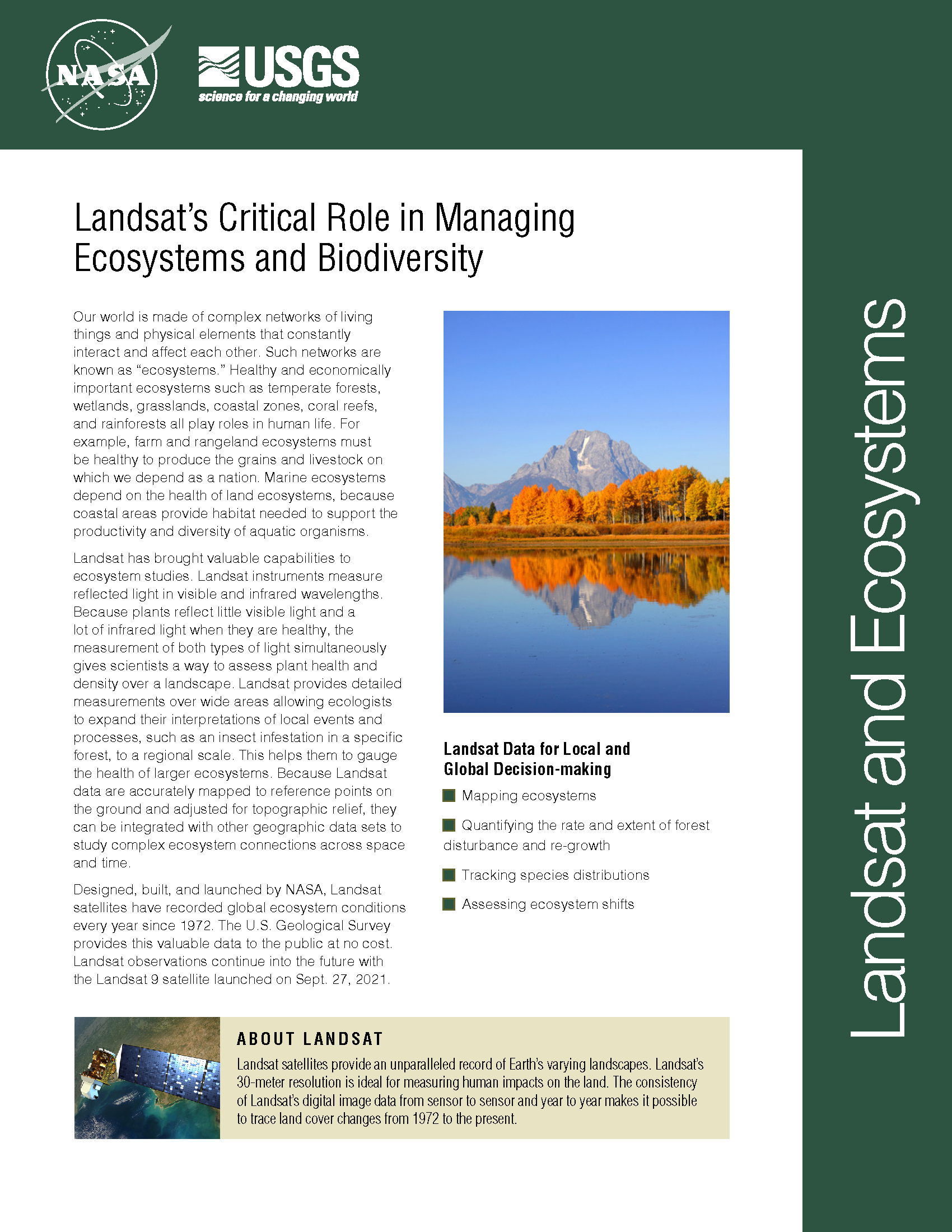Landsat’s Role in Managing Ecosystems and Biodiversity
Our world is made of complex networks of living things and physical elements that constantly interact and affect each other. Such networks are known as “ecosystems.” Healthy and economically important ecosystems such as temperate forests, wetlands, grasslands, coastal zones, coral reefs, and rainforests all play roles in human life. For example, farm and rangeland ecosystems must be healthy to produce the grains and livestock on which we depend as a nation. Marine ecosystems depend on the health of land ecosystems, because coastal areas provide habitat needed to support the productivity and diversity of aquatic organisms. Landsat has brought valuable capabilities to ecosystem studies. Landsat instruments measure reflected light in visible and infrared wavelengths. Because plants reflect little visible light and a lot of infrared light when they are healthy, the measurement of both types of light simultaneously gives scientists a way to assess plant health and density over a landscape. Measurements are detailed enough while still covering a wide area that ecologists can expand their interpretations of local events and processes, such as an insect infestation in a specific forest, to a regional scale. This helps them to gauge the health of larger ecosystems. Because Landsat data are accurately mapped to reference points on the ground and adjusted for topographic relief, they can be integrated with other geographic data sets and models to explore more complex studies of ecosystems and biodiversity across space and time.
Consequences of Aspen Die-off
Trembling aspen are dying. No tree species in North America has a broader habitat and no other is as large (a single clone can be a hundred acres in size).
Canadian Caribou Habitat Declines
Source: Global Forest Watch Canada At the International Society of Conservation Biology Conference in Auckland, New Zealand, representatives from the Grand Council of the Crees (Eeyou Istchee) in Quebec Canada
Wetland Restoration Challenges
A recent publication inGeophysical Research Letters has called into question the effectiveness of current wetland restoration methods. Using more than two decades worth of Landsat data, Dr. Michael Kearney of the
Monitoring Waterbird Habitat
In an article published this month in The International Journal of Avian Science,Spanish researchers used Landsat data to map waterbird habitat in rice paddies adjacent to the Doñana National Park in
Scientists Track Environmental Influences on Giant Kelp with Help from Landsat Data
Scientists at UC Santa Barbara have developed new methods for studying how environmental factors and climate affect giant kelp forest ecosystems at unprecedented spatial and temporal scales. The scientists merged
Landsat Reveal Surprising Connection Between Beetle Attacks, Wildfire
If your summer travels have taken you across the Rocky Mountains, you’ve probably seen large swaths of reddish trees dotting otherwise green forests. While it may look like autumn has


